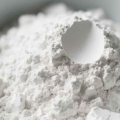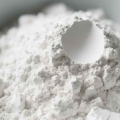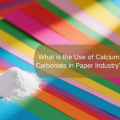- Welcome to China Calcium Carbonate Manufacturer
- WeChat:15078781000
Since their introduction, nanomaterials have attracted much attention due to their unique properties. In the lubrication industry, nano calcium carbonate (CaCO₃) stands out for its anti-wear performance, environmental friendliness, and cost-effectiveness. Among many carbonates such as MgCO₃, BaCO₃, and Na₂CO₃, nano CaCO₃ is most widely applied in lubricants.
1. Functions and Benefits of Nano Calcium Carbonate in Lubricants
With stricter environmental regulations and increased awareness of sustainability, green lubricant additives have become more desirable. Nano calcium carbonate is non-corrosive to metal, non-toxic, and biodegradable—ideal for formulating modern lubricants.
In lubricating systems, nano CaCO₃ typically acts in the following roles:
High Alkaline Metal Detergent: Improves acid neutralization and reduces engine deposits.
Grease Thickener: Enhances mechanical and thermal stability in complex greases.
Extreme Pressure (EP) Antiwear Agent: Forms protective films that reduce metal-to-metal contact.
To understand the material’s foundational differences, you may refer to
👉 What Is the Difference Between GCC and PCC?
2. Key Applications of Nano Calcium Carbonate in Lubricants
2.1 High Alkaline Metal Detergent
Nano CaCO₃ was first introduced in the 1950s to combat carbon buildup and liner corrosion in marine diesel engines. Highly alkaline metal detergents based on CaCO₃ colloidal systems must meet the following:
Strong alkalinity
Stable acid-neutralization products
Oil solubility and good fluidity
Nanoparticle size < 80 nm (ideally < 20 nm)
Smaller and more uniform CaCO₃ particles exhibit higher alkali values, improved thermal oxidation resistance, and better cleaning ability.
Research from Zhang et al. (source) confirmed that particle size distribution significantly impacts the colloid stability and performance in oil-based systems.


2.2 Grease Thickener in Calcium Sulfonate Grease
In high-performance greases, nano CaCO₃ is used within calcium sulfonate complex greases as a structural thickener. These greases offer:
Dropping points > 330°C
Excellent rust, corrosion, and water resistance
Extreme pressure and anti-wear capabilities
The thickener is a hybrid of calcium sulfonate and nano calcium carbonate, where the CaCO₃ is wrapped in sulfonate micelles forming a stable gel. The particle size (<10 nm) and amorphous-to-calcite transition improve low-temperature performance by inhibiting wax crystallization.
👉 Learn more about Lubricant Additives Based on Calcium Products
2.3 High-Efficiency Extreme Pressure Antiwear Agent
As lubricant systems evolve, the demand for chlorine-, phosphorus-, and sulfur-free EP agents is rising. Nano CaCO₃ embedded in sulfonate structures shows significant promise as an eco-friendly EP additive.
During high-pressure friction, localized heating triggers the release of CaCO₃ particles, which deposit onto metal surfaces, forming a protective film that prevents wear and seizure.
Research by Zhang Jianrong et al. demonstrated that:
Calcite-type CaCO₃ forms a thicker, more durable protective film
Amorphous CaCO₃ results in weaker EP performance
Crystalline structure > particle size in influencing EP efficiency
These findings underscore the importance of controlled morphology and structure during synthesis.
3. Conclusion
Nano calcium carbonate stands out as a versatile green additive in lubricants, delivering benefits across cleaning, thickening, and wear resistance. However, the crystal form, particle size, and dispersion stability of CaCO₃ nanoparticles directly influence its effectiveness. Therefore, precision-controlled synthesis is critical for commercial and industrial applications.
For further technical reading on nano CaCO₃ properties, visit:









